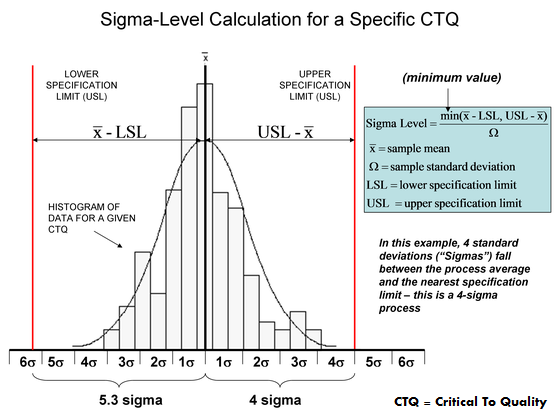Six Sigma Standard of Excellence
Today's competitive environment leaves no room for error. 3rd-i.info must delight its customers and relentlessly look for new ways to exceed their expectations. This is why Six Sigma Quality has become a part of our corporate culture.
Traditionally, Six Sigma is implemented to improve repetitive processes that already exist, for instance, those inherent to manufacturing. If the underlying design of an existing product or process is extremely flawed it might be impossible to “improve” this design to achieve Six Sigma quality standards. In contrast, it is advantagous to design quality into the the product or process from the get go to eliminate the need for or to minimize the number of necessary improvements needed to obtain the minium value for sigma (as close to zero defects as possible).
Sigma is a statistical term used to name the measure of how far a given process deviates from perfection. The central idea behind Six Sigma is that if you can measure how many "defects" you have in a process, you can systematically figure out how to eliminate them and refine the process to produce "as close to zero defects" as possible. To achieve Six Sigma Quality, a process must produce no more than 3.4 defects per million opportunities. An opportunity is defined as a chance to perform where the possible outcomes are success or failure. The objective is to gauge processes progress with statistical measurements that allow for the identification of failure causations, to eliminate such causations, and to be flawless and maintain flawlessness in streamlining the execution of our key processes.
Design for Six Sigma (DFSS) takes Six Sigma a step further, focusing upon value (the budgetary aspect of development), in addition to quality, reliability, and robustness. As it applies to software engineering, DFSS relates all software development design decisions to all other design decisions, holding them all to the same quality criteria, regardless of how they are notated or which mathematics they use.
These DFSS processes include:
Design of Experiments: Determine the cause and effect relationship between factors affecting a process and its output quality.
Taguchi Robust Design: Determine the system design that works well in spite of real world noise and unpredictability.
Quality Function Deployment: Discovering customer value, analysis of competition, and priority of product features.
Axiomatic Design: Systems design methodology using matrix methods to systematically analyze the transformation of customer needs
into functional requirements, design parameters, and process variables. Functional requirements (FRs) are related to design parameters (DPs) :

Axiomatic Matrix Equation relating
Functional Requirments to Design
Parameters.




